Medicinal Components in Edible Mushrooms on Diabetes Mellitus Treatment
Abstract
:1. Introduction
2. Diabetes Mellitus and Insulin Resistance
3. Diabetes Mellitus and Insulin Resistance Preventive Mechanism by Edible Mushroom
3.1. Blood Glucose-Lowering Effect of Polysaccharide
3.1.1. Inhibition of Glucose Absorption
3.1.2. Maintains Pancreatic ß Cells Activity
3.2. Blood Glucose-Lowering Effect of Terpenoids
3.3. Role of Vitamin D in Blood Glucose Regulations
4. Conclusions
Author Contributions
Funding
Institutional Review Board Statement
Informed Consent Statement
Data Availability Statement
Acknowledgments
Conflicts of Interest
Abbreviations
References
- Ukwuru, M.; Muritala, A.; Eze, L. Edible and non-edible wild mushrooms: Nutrition, toxicity and strategies for recognition. J. Clin. Nutr. Metab. 2018, 2, 9. [Google Scholar]
- Ślusarczyk, J.; Adamska, E.; Czerwik-Marcinkowska, J. Fungi and algae as sources of medicinal and other biologically active compounds: A review. Nutrients 2021, 13, 3178. [Google Scholar] [CrossRef] [PubMed]
- Hoa, H.T.; Wang, C.L.; Wang, C.H. The effects of different substrates on the growth, yield, and nutritional composition of two oyster mushrooms (Pleurotus ostreatus and Pleurotus cystidiosus). Mycobiology 2015, 43, 423–434. [Google Scholar] [CrossRef] [Green Version]
- Koutrotsios, G.; Tagkouli, D.; Bekiaris, G.; Kaliora, A.; Tsiaka, T.; Tsiantas, K.; Chatzipavlidis, I.; Zoumpoulakis, P.; Kalogeropoulos, N.; Zervakis, G.I. Enhancing the nutritional and functional properties of Pleurotus citrinopileatus mushrooms through the exploitation of winery and olive mill wastes. Food Chem. 2022, 370, 131022. [Google Scholar] [CrossRef]
- Yadav, D.R. Edible Mushrooms. 2010. Available online: https://www.researchgate.net/publication/322210506_EDIBLE_MUSHROOMS?channel=doi&linkId=5a4bbf790f7e9b8284c2ded5&showFulltext=true (accessed on 19 January 2022).
- Das, A.K.; Nanda, P.K.; Dandapat, P.; Bandyopadhyay, S.; Gullón, P.; Sivaraman, G.K.; McClements, D.J.; Gullón, B.; Lorenzo, J.M. Edible mushrooms as functional ingredients for development of healthier and more sustainable muscle foods: A flexitarian approach. Molecules 2021, 26, 2463. [Google Scholar] [CrossRef] [PubMed]
- Sharma, V.P.; Barh, A.; Bairwa, R.; Annepu, S.K.; Thakur, B.; Kamal, S. Enoki mushroom (Flammulina velutipes (Curtis) Singer) breeding. In Advances in Plant Breeding Strategies: Vegetable Crops; Springer: Cham, Switzerland, 2021; pp. 423–441. [Google Scholar]
- Tiane, C.; Finimundy, T.; José, A.; Dillon, P.; Antônio, J.; Henriques, J.A.; Ely, M. A review on general nutritional compounds and pharmacological properties of the Lentinula edodes mushroom. Food Nutr. Sci. 2014, 5, 1095–1105. [Google Scholar] [CrossRef] [Green Version]
- Song, Q.; Teng, A.G.; Zhu, Z. Chemical structure and inhibition on α-glucosidase of a novel polysaccharide from Hypsizygus marmoreus. J. Mol. Struct. 2020, 1211, 128110. [Google Scholar] [CrossRef]
- Kleftaki, S.A.; Simati, S.; Amerikanou, C.; Gioxari, A.; Tzavara, C.; Zervakis, G.I.; Kalogeropoulos, N.; Kokkinos, A.; Kaliora, A.C. Pleurotus eryngii improves postprandial glycaemia, hunger and fullness perception, and enhances ghrelin suppression in people with metabolically unhealthy obesity. Pharmacol. Res. 2022, 175, 105979. [Google Scholar] [CrossRef]
- He, X.; Wang, X.; Fang, J.; Chang, Y.; Ning, N.; Guo, H.; Huang, L.; Huang, X.; Zhao, Z. Polysaccharides in Grifola frondosa mushroom and their health promoting properties: A review. Int. J. Biol. Macromol. 2017, 101, 910–921. [Google Scholar] [CrossRef]
- Diyabalanage, T.; Mulabagal, V.; Mills, G.; Dewitt, D.; Nair, M. Health-beneficial qualities of the edible mushroom, Agrocybe aegerita. Food Chem. 2008, 108, 97–102. [Google Scholar] [CrossRef]
- Rahman, M.; Akter, R. Diabetes ameliorating effect of mushrooms. J. Nov. Physiother. 2021, 2, 9–13. [Google Scholar]
- Thu, Z.M.; Myo, K.K.; Aung, H.T.; Clericuzio, M.; Armijos, C.; Vidari, G. Bioactive phytochemical constituents of wild edible mushrooms from southeast Asia. Molecules 2020, 25, 1972. [Google Scholar] [CrossRef] [PubMed]
- Ogbole, O.O.; Noleto-Dias, C.; Kamdem, R.S.T.; Akinleye, T.E.; Nkumah, A.; Ward, J.L.; Beale, M.H. γ-Glutamyl-β-phenylethylamine, a novel α-glucosidase and α-amylase inhibitory compound from Termitomyces robustus, an edible Nigerian mushroom. Nat. Prod. Res. 2021, 1–11. [Google Scholar] [CrossRef]
- Ma, G.; Yang, W.; Zhao, L.; Pei, F.; Fang, D.; Hu, Q. A critical review on the health promoting effects of mushrooms nutraceuticals. Food Sci. Hum. Wellness 2018, 7, 125–133. [Google Scholar] [CrossRef]
- Tung, Y.T.; Pan, C.H.; Chien, Y.W.; Huang, H.Y. Edible mushrooms: Novel medicinal agents to combat metabolic syndrome and associated diseases. Curr. Pharm. Des. 2020, 26, 4970–4981. [Google Scholar] [CrossRef] [PubMed]
- Yang, S.; Yan, J.; Yang, L.; Meng, Y.; Wang, N.; He, C.; Fan, Y.; Zhou, Y. Alkali-soluble polysaccharides from mushroom fruiting bodies improve insulin resistance. Int. J. Biol. Macromol. 2019, 126, 466–474. [Google Scholar] [CrossRef]
- Dasgupta, A.; Acharya, K. Mushrooms: An emerging resource for therapeutic terpenoids. 3 Biotech 2019, 9, 369. [Google Scholar] [CrossRef]
- Kharroubi, A.T.; Darwish, H.M. Diabetes mellitus: The epidemic of the century. World J. Diabetes 2015, 6, 850–867. [Google Scholar] [CrossRef]
- Gabir, M.M.; Hanson, R.L.; Dabelea, D.; Imperatore, G.; Roumain, J.; Bennett, P.H.; Knowler, W.C. The 1997 American Diabetes Association and 1999 World Health Organization criteria for hyperglycemia in the diagnosis and prediction of diabetes. Diabetes Care 2000, 23, 1108–1112. [Google Scholar] [CrossRef] [Green Version]
- Alam, F.; Islam, M.A.; Mohamed, M.; Ahmad, I.; Kamal, M.A.; Donnelly, R.; Idris, I.; Gan, S.H. Efficacy and safety of pioglitazone monotherapy in type 2 diabetes mellitus: A systematic review and meta-analysis of randomised controlled trials. Sci. Rep. 2019, 9, 5389. [Google Scholar] [CrossRef] [Green Version]
- Vitak, T.; Yurkiv, B.; Wasser, S.; Nevo, E.; Sybirna, N. Effect of medicinal mushrooms on blood cells under conditions of diabetes mellitus. World J. Diabetes 2017, 8, 187–201. [Google Scholar] [CrossRef] [PubMed]
- Misra, A.; Ramchandran, A.; Jayawardena, R.; Shrivastava, U.; Snehalatha, C. Diabetes in South Asians. Diabet. Med. 2014, 31, 1153–1162. [Google Scholar] [CrossRef]
- Kosiborod, M.; Gomes, M.B.; Nicolucci, A.; Pocock, S.; Rathmann, W.; Shestakova, M.V.; Watada, H.; Shimomura, I.; Chen, H.; Cid-Ruzafa, J.; et al. Vascular complications in patients with type 2 diabetes: Prevalence and associated factors in 38 countries (the DISCOVER study program). Cardiovasc. Diabetol. 2018, 17, 150. [Google Scholar] [CrossRef] [PubMed] [Green Version]
- Ndisang, J.F.; Vannacci, A.; Rastogi, S. Insulin resistance, type 1 and type 2 diabetes, and related complications 2017. J. Diabetes Res. 2017, 2017, 1478294. [Google Scholar] [CrossRef] [PubMed]
- Ndisang, J.F.; Rastogi, S.; Vannacci, A. Insulin resistance, type 1 and type 2 diabetes, and related complications 2015. J. Diabetes Res. 2015, 2015, 234135. [Google Scholar] [CrossRef]
- Taylor, R. Insulin resistance and type 2 diabetes. Diabetes 2012, 61, 778–779. [Google Scholar] [CrossRef] [PubMed] [Green Version]
- Duvnjak, L.; Duvnjak, M. The metabolic syndrome—an ongoing story. J. Physiol. Pharmacol. Off. J. Pol. Physiol. Soc. 2009, 60 (Suppl. 7), 19–24. [Google Scholar]
- Ndisang, J.F.; Rastogi, S.; Vannacci, A. Insulin resistance, type 1 and type 2 diabetes, and related complications: Current status and future perspective. J. Diabetes Res. 2014, 2014, 276475. [Google Scholar] [CrossRef]
- Montoya, L.; Herrera, M.; Bandala, V.M.; Ramos, A. Two new species and a new record of yellow Cantharellus from tropical Quercus forests in eastern Mexico with the proposal of a new name for the replacement of Craterellus confluens. MycoKeys 2021, 80, 91. [Google Scholar] [CrossRef]
- Hermawan, R.; Putra, I. Calvatia rugosa: Epigeous Puffball mushroom reported from West Java. Sci. Educ. Appl. J. 2021, 3, 1. [Google Scholar] [CrossRef]
- Nowakowski, P.; Naliwajko, S.K.; Markiewicz-Żukowska, R.; Borawska, M.H.; Socha, K. The two faces of Coprinus comatus- functional properties and potential hazards. Phytother. Res. 2020, 34, 2932–2944. [Google Scholar] [CrossRef] [PubMed]
- Starzycki, M.; Paukszta, D.; Starzycka, E. Vitro growth of oyster mushroom (pleurotus ostreatus) mycelium on composites filled with rapeseed. Phytopathologia 2014, 65, 33–37. [Google Scholar]
- Frank, J.; Siegel, N.; Schwarz, C.; Araki, B.; Vellinga, E. Xerocomellus (Boletaceae) in western North America. Fungal Syst. Evol. 2020, 6, 265–288. [Google Scholar] [CrossRef] [PubMed]
- Elkhateeb, W.; Ezzat el ghwas, D.; Gundoju, N.; Tiruveedhula, S.; Akram, M.; Daba, G. Chicken of the woods Laetiporus Sulphureus and Schizophyllum Commune treasure of medicinal mushrooms. J. Microbiol. Biotechnol. 2021, 6, 1–7. [Google Scholar] [CrossRef]
- Dissanayake, A.A.; Zhang, C.R.; Mills, G.L.; Nair, M.G. Cultivated maitake mushroom demonstrated functional food quality as determined by in vitro bioassays. J. Funct. Foods 2018, 44, 79–85. [Google Scholar] [CrossRef]
- Ekowati, N.; Yuniati, N.I.; Hernayanti, H.; Ratnaningtyas, N.I. Antidiabetic potentials of button mushroom (Agaricus bisporus) on alloxan-induced diabetic rats. Biosaintifika J. Biol. Biol. Educ. 2018, 10, 655–662. [Google Scholar] [CrossRef] [Green Version]
- Halama, M.; Pech, P.; Shiryaev, A.G. Contribution to the knowledge of Ramariopsis subarctica (Clavariaceae, Basidiomycota). Pol. Bot. J. 2017, 62, 123–133. [Google Scholar] [CrossRef]
- Masaphy, S.; Zabari, L.; Goldberg, D.; Jander-Shagug, G. The complexity of Morchella systematics: A case of the yellow morel from Israel. Fungi 2010, 3, 14–18. [Google Scholar]
- Wu, D.; Yang, S.; Tang, C.; Liu, Y.; Li, Q.; Zhang, H.; Cui, F.; Yang, Y. Structural properties and macrophage activation of cell wall polysaccharides from the fruiting bodies of Hericium erinaceus. Polymers 2018, 10, 850. [Google Scholar] [CrossRef] [Green Version]
- Bao, D.; Gong, M.; Zheng, H.; Chen, M.; Zhang, L.; Wang, H.; Jiang, J.; Wu, L.; Zhu, Y.; Zhu, G.; et al. Sequencing and comparative analysis of the straw mushroom (Volvariella volvacea) genome. PLoS ONE 2013, 8, e58294. [Google Scholar] [CrossRef]
- Liang, C.; Tian, D.; Liu, Y.; Li, H.; Zhu, J.; Li, M.; Xin, M.; Xia, J. Review of the molecular mechanisms of Ganoderma lucidum triterpenoids: Ganoderic acids A, C2, D, F, DM, X and Y. Eur. J. Med. Chem. 2019, 174, 130–141. [Google Scholar] [CrossRef] [PubMed]
- Lin, C.P.; Tsai, S.-Y. Differences in the moisture capacity and thermal stability of Tremella fuciformis polysaccharides obtained by various drying processes. Molecules 2019, 24, 2856. [Google Scholar] [CrossRef] [PubMed] [Green Version]
- Senthilarasu, G. The lentinoid fungi (Lentinus and Panus) from Western Ghats, India. IMA Fungus 2015, 6, 119–128. [Google Scholar] [CrossRef] [PubMed]
- Chakraborty, B.; Chakraborty, U.; Barman, S.; Roy, S. Effect of different substrates and casing materials on growth and yield of Calocybe indica (P&C) in North Bengal, India. J. Appl. Nat. Sci. 2016, 8, 683–690. [Google Scholar]
- Karun, N.; Sharma, B.; Sridhar, K. Biodiversity of macrofungi in Yenepoya Campus, Southwest India. Microb. Biosyst. 2018, 3, 1–11. [Google Scholar] [CrossRef] [Green Version]
- Adhikari, M.K.; Watanabe, K.; Parajuli, G. A new variety of Pholiota microspora (Agaricales) from Nepal. Biodiversitas J. Biol. Divers. 2014, 15, 101–103. [Google Scholar] [CrossRef]
- Hu, Y.-N.; Sung, T.-J.; Chou, C.-H.; Liu, K.-L.; Hsieh, L.-P.; Hsieh, C.-W. Characterization and antioxidant activities of yellow Strain Flammulina velutipes (Jinhua Mushroom) polysaccharides and their effects on ROS content in L929 cell. Antioxidants 2019, 8, 298. [Google Scholar] [CrossRef] [Green Version]
- Chicatto, J.; Castamann, V.; Helm, C.; Tavares, L. Optimization of the production process of enzymatic activity of Lentinula edodes (Berk.) pegler in holocelulases. Nat. Resour. 2014, 5, 241–255. [Google Scholar] [CrossRef] [Green Version]
- Shah, S.R.; Ukaegbu, C.I.; Hamid, H.A.; Alara, O.R. Evaluation of antioxidant and antibacterial activities of the stems of Flammulina velutipes and Hypsizygus tessellatus (white and brown var.) extracted with different solvents. J. Food Meas. Charact. 2018, 12, 1947–1961. [Google Scholar] [CrossRef]
- Nagalakshmi, M.; Krishnakumari, S.; Kathiravan, S. Comparitive study of various substrate supplements in the growth and yield of Agrocybe aegerita, black poplar mushroom. World J. Pharm. Res. 2014, 3, 487–496. [Google Scholar]
- Rahmad, N.; Al-Obaidi, J.; Mohd Nor Rashid, N.; Zean, N.; Yuswan, M.H.; Shaharuddin, N.; Mohd Jamil, N.A.; Mohd Saleh, N. Comparative proteomic analysis of different developmental stages of the edible mushroom Termitomyces heimii. Biol. Res. 2014, 47, 30. [Google Scholar] [CrossRef] [PubMed] [Green Version]
- Ogbole, O.O.; Nkumah, A.O.; Linus, A.U.; Falade, M.O. Molecular identification, in vivo and in vitro activities of Calvatia gigantea (macro-fungus) as an antidiabetic agent. Mycology 2019, 10, 166–173. [Google Scholar] [CrossRef] [PubMed] [Green Version]
- Gao, Z.; Kong, D.; Cai, W.; Zhang, J.; Jia, L. Characterization and anti-diabetic nephropathic ability of mycelium polysaccharides from Coprinus comatus. Carbohydr. Polym. 2021, 251, 117081. [Google Scholar] [CrossRef] [PubMed]
- Asrafuzzaman, M.; Rahman, M.; Mandal, M.; Marjuque, M.; Bhowmik, D.; Begum, R.; Hassan, M.Z.; Faruque, M. Oyster mushroom functions as an anti-hyperglycaemic through phosphorylation of AMPK and increased expression of GLUT4 in type 2 diabetic model rats. J. Taibah Univ. Med. Sci. 2018, 13, 465–471. [Google Scholar] [CrossRef]
- Ali Sangi, S.; Bawadekji, A.; Al Ali, M. Comparative effects of metformin, Pleurotus ostreatus, Nigella sativa, and Zingiber officinale on the streptozotocin-induced diabetes mellitus in rats. Pharmacogn. Mag. 2018, 14, 268–273. [Google Scholar] [CrossRef]
- Xiao, Y.; Chen, L.; Fan, Y.; Yan, P.; Li, S.; Zhou, X. The effect of boletus polysaccharides on diabetic hepatopathy in rats. Chem.-Biol. Interact. 2019, 308, 61–69. [Google Scholar] [CrossRef]
- Xiao, C.; Jiao, C.; Xie, Y.; Ye, L.; Li, Q.; Wu, Q. Grifola frondosa GF5000 improves insulin resistance by modulation the composition of gut microbiota in diabetic rats. J. Funct. Foods 2021, 77, 104313. [Google Scholar] [CrossRef]
- Patel, D.K.; Dutta, S.D.; Ganguly, K.; Cho, S.J.; Lim, K.T. Mushroom-derived bioactive molecules as immunotherapeutic agents: A review. Molecules 2021, 26, 1359. [Google Scholar] [CrossRef]
- Blumfield, M.; Abbott, K.; Duve, E.; Cassettari, T.; Marshall, S.; Fayet-Moore, F. Examining the health effects and bioactive components in Agaricus bisporus mushrooms: A scoping review. J. Nutr. Biochem. 2020, 84, 108453. [Google Scholar] [CrossRef]
- Wu, H.; Chen, J.; Li, J.; Liu, Y.; Park, H.; Yang, L. Recent advances on bioactive ingredients of Morchella esculenta. Appl. Biochem. Biotechnol. 2021, 193, 4197–4213. [Google Scholar] [CrossRef]
- Zhang, C.; Li, J.; Hu, C.; Wang, J.; Zhang, J.; Ren, Z.; Song, X.; Jia, L. Antihyperglycaemic and organic protective effects on pancreas, liver and kidney by polysaccharides from Hericium erinaceus SG-02 in streptozotocin-induced diabetic mice. Sci. Rep. 2017, 7, 10847. [Google Scholar] [CrossRef] [PubMed]
- Thongbai, B.; Rapior, S.; Hyde, K.D.; Wittstein, K.; Stadler, M. Hericium erinaceus, an amazing medicinal mushroom. Mycol. Prog. 2015, 14, 91. [Google Scholar] [CrossRef]
- Huang, C.-H.; Lin, W.-K.; Chang, S.H.; Tsai, G.-J. Evaluation of the hypoglycaemic and antioxidant effects of submerged Ganoderma lucidum cultures in type 2 diabetic rats. Mycology 2021, 12, 82–93. [Google Scholar] [CrossRef] [PubMed] [Green Version]
- Zeb, M.; Lee, C.H. Medicinal properties and bioactive compounds from wild mushrooms native to North America. Molecules 2021, 26, 251. [Google Scholar] [CrossRef]
- Wang, Y.; Zhang, H. Advances in the extraction, purification, structural-property relationships and bioactive molecular mechanism of Flammulina velutipes polysaccharides: A review. Int. J. Biol. Macromol. 2021, 167, 528–538. [Google Scholar] [CrossRef]
- Song, X.; Fu, H.; Chen, W. Effects of Flammulina velutipes polysaccharides on quality improvement of fermented milk and antihyperlipidemic on streptozotocin-induced mice. J. Funct. Foods 2021, 87, 104834. [Google Scholar] [CrossRef]
- Rivera, O.A.; Albarracín, W.; Lares, M. Bioactive components of shiitake (Lentinula edodes Berk. Pegler) and its impact on health. Arch. Venez. De Farmacol. Y Ter. 2017, 36, 67–71. [Google Scholar]
- Laurino, L.F.; Viroel, F.J.M.; Caetano, E.; Spim, S.; Pickler, T.B.; Rosa-Castro, R.M.; Vasconcelos, E.A.; Jozala, A.F.; Hataka, A.; Grotto, D.; et al. Lentinus edodes exposure before and after fetus implantation: Materno-fetal development in rats with gestational diabetes mellitus. Nutrients 2019, 11, 2720. [Google Scholar] [CrossRef] [Green Version]
- Ugbogu, E.A.; Akubugwo, E.; Ude, V.; Okezie, E.; Nduka, O.; Ibeh, C.; Onyero, O. Safety evaluation of aqueous extract of Termitomyces robustus (Agaricomycetes) in Wistar Rats. Int. J. Med. Mushrooms 2018, 21, 193–203. [Google Scholar] [CrossRef]
- Wondmkun, Y.T. Obesity, insulin resistance, and type 2 diabetes: Associations and therapeutic implications. Diabetes Metab. Syndr. Obes. 2020, 13, 3611–3616. [Google Scholar] [CrossRef]
- Shyur, L.-F.; Varga, V.; Chen, C.-M.; Mu, S.-C.; Chang, Y.-C.; Li, S.-C. Extract of white sweet potato tuber against TNF-α-induced insulin resistance by activating the PI3K/Akt pathway in C2C12 myotubes. Bot. Stud. 2021, 62, 7. [Google Scholar] [CrossRef] [PubMed]
- Nolan, C.J.; Prentki, M. Insulin resistance and insulin hypersecretion in the metabolic syndrome and type 2 diabetes: Time for a conceptual framework shift. Diabetes Vasc. Dis. Res. 2019, 16, 118–127. [Google Scholar] [CrossRef] [PubMed]
- Junttila, M.J.; Kiviniemi, A.M.; Lepojärvi, E.S.; Tulppo, M.; Piira, O.-P.; Kenttä, T.; Perkiömäki, J.S.; Ukkola, O.H.; Myerburg, R.J.; Huikuri, H.V. Type 2 diabetes and coronary artery disease: Preserved ejection fraction and sudden cardiac death. Heart Rhythm. 2018, 15, 1450–1456. [Google Scholar] [CrossRef]
- Czech, M.P. Insulin action and resistance in obesity and type 2 diabetes. Nat. Med. 2017, 23, 804–814. [Google Scholar] [CrossRef] [PubMed]
- Shulman, G.I. Ectopic fat in insulin resistance, dyslipidemia, and cardiometabolic disease. N. Engl. J. Med. 2014, 371, 1131–1141. [Google Scholar] [CrossRef] [PubMed]
- Aramabašić Jovanović, J.; Mihailović, M.; Uskoković, A.; Grdović, N.; Dinić, S.; Vidaković, M. The effects of major mushroom bioactive compounds on mechanisms that control blood glucose level. J. Fungi 2021, 7, 58. [Google Scholar] [CrossRef] [PubMed]
- Grondin, J.M.; Tamura, K.; Déjean, G.; Abbott, D.W.; Brumer, H. Polysaccharide utilization loci: Fueling microbial communities. J. Bacteriol. 2017, 199, e00860-16. [Google Scholar] [CrossRef] [Green Version]
- Dubey, S.K.; Chaturvedi, V.K.; Mishra, D.; Bajpeyee, A.; Tiwari, A.; Singh, M.P. Role of edible mushroom as a potent therapeutics for the diabetes and obesity. 3 Biotech 2019, 9, 450. [Google Scholar] [CrossRef]
- Kou, L.; Du, M.; Liu, P.; Zhang, B.; Zhang, Y.; Yang, P.; Shang, M.; Wang, X. Anti-diabetic and anti-nephritic activities of Grifola frondosa mycelium polysaccharides in diet-streptozotocin-induced diabetic rats via modulation on oxidative stress. Appl. Biochem. Biotechnol. 2019, 187, 310–322. [Google Scholar] [CrossRef]
- Ratnaningtyas, N.I.; Hernayanti, H.; Andarwanti, S.; Ekowati, N.; Purwanti, E.S.; Sukmawati, D. Effects of Ganoderma lucidum extract on diabetic rats. Biosaintifika J. Biol. Biol. Educ. 2018, 10, 6. [Google Scholar] [CrossRef] [Green Version]
- Lin, X.; Brennan-Speranza, T.C.; Levinger, I.; Yeap, B.B. Undercarboxylated osteocalcin: Experimental and human evidence for a role in glucose homeostasis and muscle regulation of insulin sensitivity. Nutrients 2018, 10, 847. [Google Scholar] [CrossRef] [PubMed] [Green Version]
- Zhang, L.; Hu, Y.; Duan, X.; Tang, T.; Shen, Y.; Hu, B.; Liu, A.; Chen, H.; Li, C.; Liu, Y. Characterization and antioxidant activities of polysaccharides from thirteen boletus mushrooms. Int. J. Biol. Macromol. 2018, 113, 1–7. [Google Scholar] [CrossRef] [PubMed]
- Khursheed, R.; Singh, S.K.; Wadhwa, S.; Gulati, M.; Awasthi, A. Therapeutic potential of mushrooms in diabetes mellitus: Role of polysaccharides. Int. J. Biol. Macromol. 2020, 164, 1194–1205. [Google Scholar] [CrossRef]
- Panigrahy, S.; Bhatt, R.; Kumar, A. Targeting type II diabetes with plant terpenes: The new and promising antidiabetic therapeutics. Biologia 2020, 76, 241–254. [Google Scholar] [CrossRef]
- Kolundzic, M.; Grozdanić, N.; Stanojkovic, T.; Milenkovic, M.; Dinic, M.; Golić, N.; Kojic, M.; Kundaković, T. Antimicrobial and cytotoxic activities of the sulphur shelf medicinal mushroom laetiporus sulphureus (Agaricomycetes) from Serbia. Int. J. Med. Mushrooms 2016, 18, 469–476. [Google Scholar] [CrossRef]
- Ma, X.; Yang, M.; He, Y.; Zhai, C.; Li, C. A review on the production, structure, bioactivities and applications of Tremella polysaccharides. Int. J. Immunopathol. Pharmacol. 2021, 35, 20587384211000541. [Google Scholar] [CrossRef]
- Zhu, G.; Hayashi, M.; Shimomura, N.; Yamaguchi, T.; Aimi, T. Differential expression of three α-amylase genes from the basidiomycetous fungus Pholiota microspora. Mycoscience 2017, 58, 188–191. [Google Scholar] [CrossRef]
- Cardwell, G.; Bornman, J.F.; James, A.P.; Black, L.J. A review of mushrooms as a potential source of dietary vitamin D. Nutrients 2018, 10, 1498. [Google Scholar] [CrossRef] [Green Version]
- Sung, C.-C.; Liao, M.-T.; Lu, K.-C.; Wu, C.-C. Role of vitamin D in insulin resistance. J. Biomed. Biotechnol. 2012, 2012, 634195. [Google Scholar] [CrossRef]
- Szymczak-Pajor, I.; Drzewoski, J.; Śliwińska, A. The molecular mechanisms by which vitamin D prevents insulin resistance and associated disorders. Int. J. Mol. Sci. 2020, 21, 6644. [Google Scholar] [CrossRef]
- Talaei, A.; Mohamadi, M.; Adgi, Z. The effect of vitamin D on insulin resistance in patients with type 2 diabetes. Diabetol. Metab. Syndr. 2013, 5, 8. [Google Scholar] [CrossRef] [Green Version]
- Zakhary, C.M.; Rushdi, H.; Hamdan, J.A.; Youssef, K.N.; Khan, A.; Abdalla, M.A.; Khan, S. Protective role of vitamin D therapy in diabetes mellitus type II. Cureus 2021, 13, e17317. [Google Scholar] [CrossRef]
- Al-Shoumer, K.A.; Al-Essa, T.M. Is there a relationship between vitamin D with insulin resistance and diabetes mellitus? World J. Diabetes 2015, 6, 1057–1064. [Google Scholar] [CrossRef] [PubMed]
- Urbain, P.; Singler, F.; Ihorst, G.; Biesalski, H.K.; Bertz, H. Bioavailability of vitamin D₂ from UV-B-irradiated button mushrooms in healthy adults deficient in serum 25-hydroxyvitamin D: A randomized controlled trial. Eur. J. Clin. Nutr. 2011, 65, 965–971. [Google Scholar] [CrossRef] [PubMed] [Green Version]
- Wenclewska, S.; Szymczak-Pajor, I.; Drzewoski, J.; Bunk, M.; Śliwińska, A. Vitamin D supplementation reduces both oxidative DNA damage and insulin resistance in the elderly with metabolic disorders. Int. J. Mol. Sci. 2019, 20, 2891. [Google Scholar] [CrossRef] [PubMed] [Green Version]
- Mutt, S.J.; Raza, G.S.; Mäkinen, M.J.; Keinänen-Kiukaanniemi, S.; Järvelin, M.R.; Herzig, K.H. Vitamin D deficiency induces insulin resistance and re-supplementation attenuates hepatic glucose output via the PI3K-AKT-FOXO1 mediated pathway. Mol. Nutr. Food Res. 2020, 64, e1900728. [Google Scholar] [CrossRef]
- El Hajj, C.; Walrand, S.; Helou, M.; Yammine, K. Effect of vitamin D supplementation on inflammatory markers in non-obese Lebanese patients with type 2 diabetes: A randomized controlled trial. Nutrients 2020, 12, 2033. [Google Scholar] [CrossRef]
- Cojic, M.; Kocic, R.; Klisic, A.; Kocic, G. The effects of vitamin D supplementation on metabolic and oxidative stress markers in patients with type 2 diabetes: A 6-month follow up randomized controlled study. Front. Endocrinol. 2021, 12, 610893. [Google Scholar] [CrossRef]
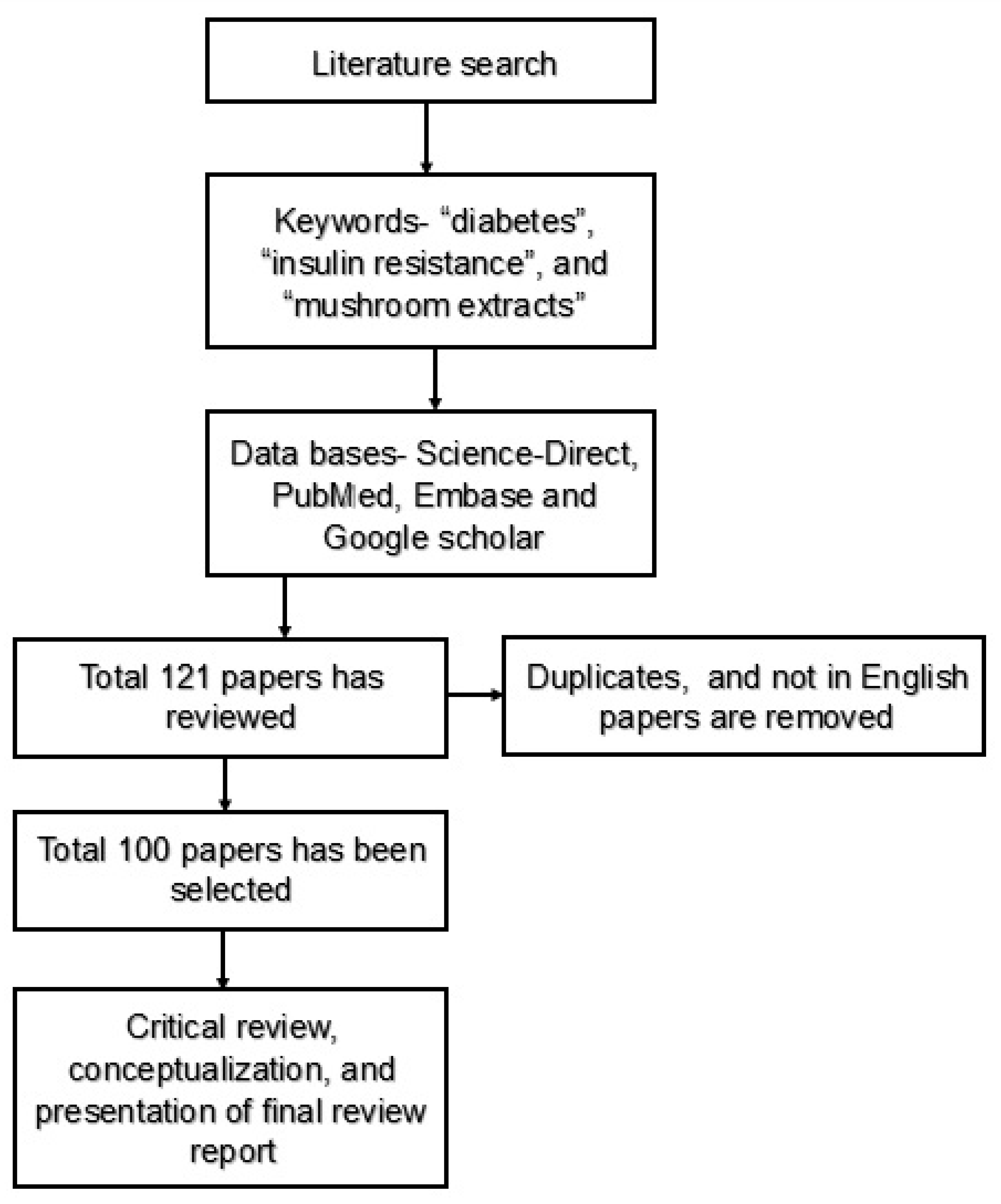
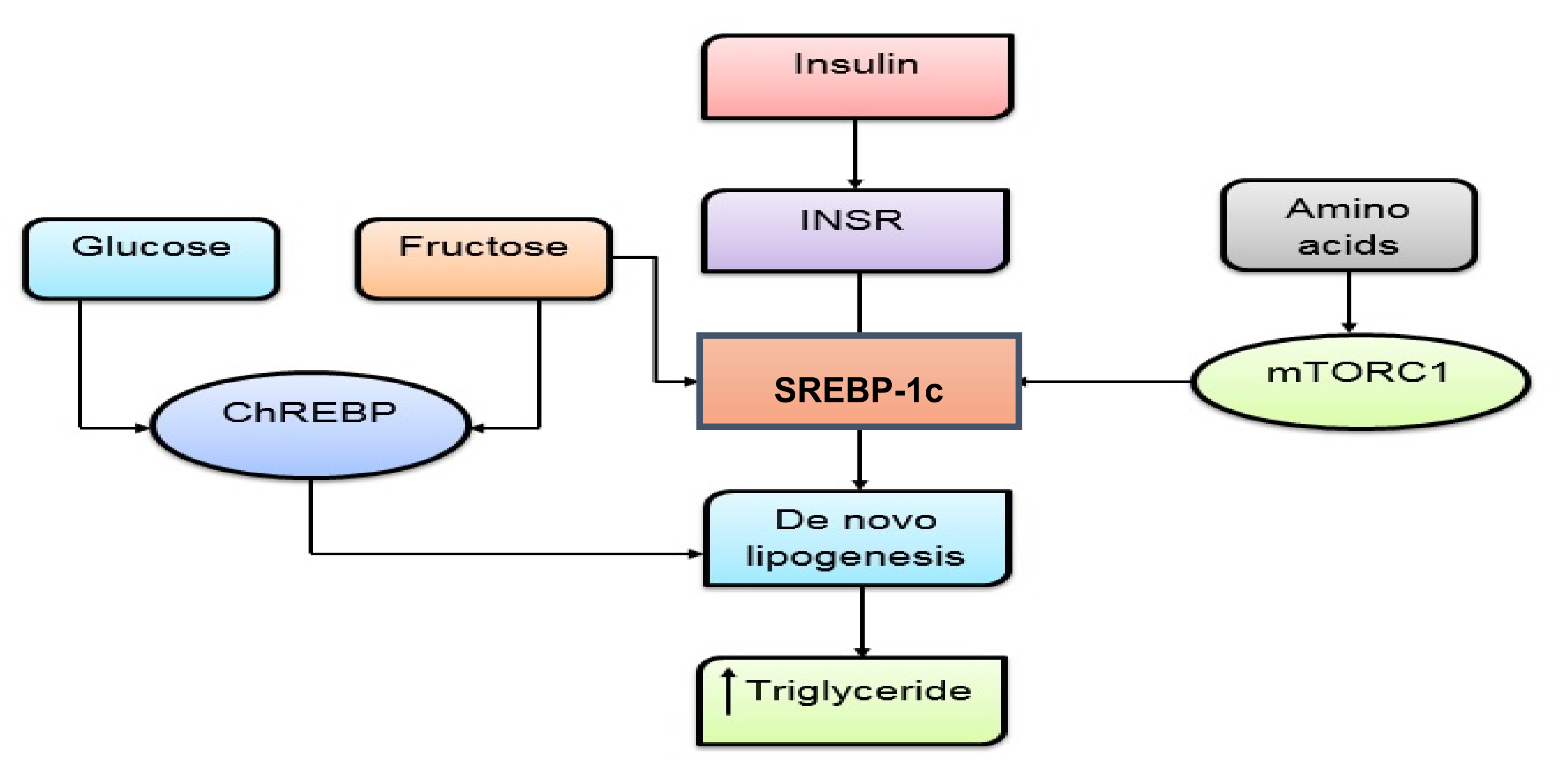
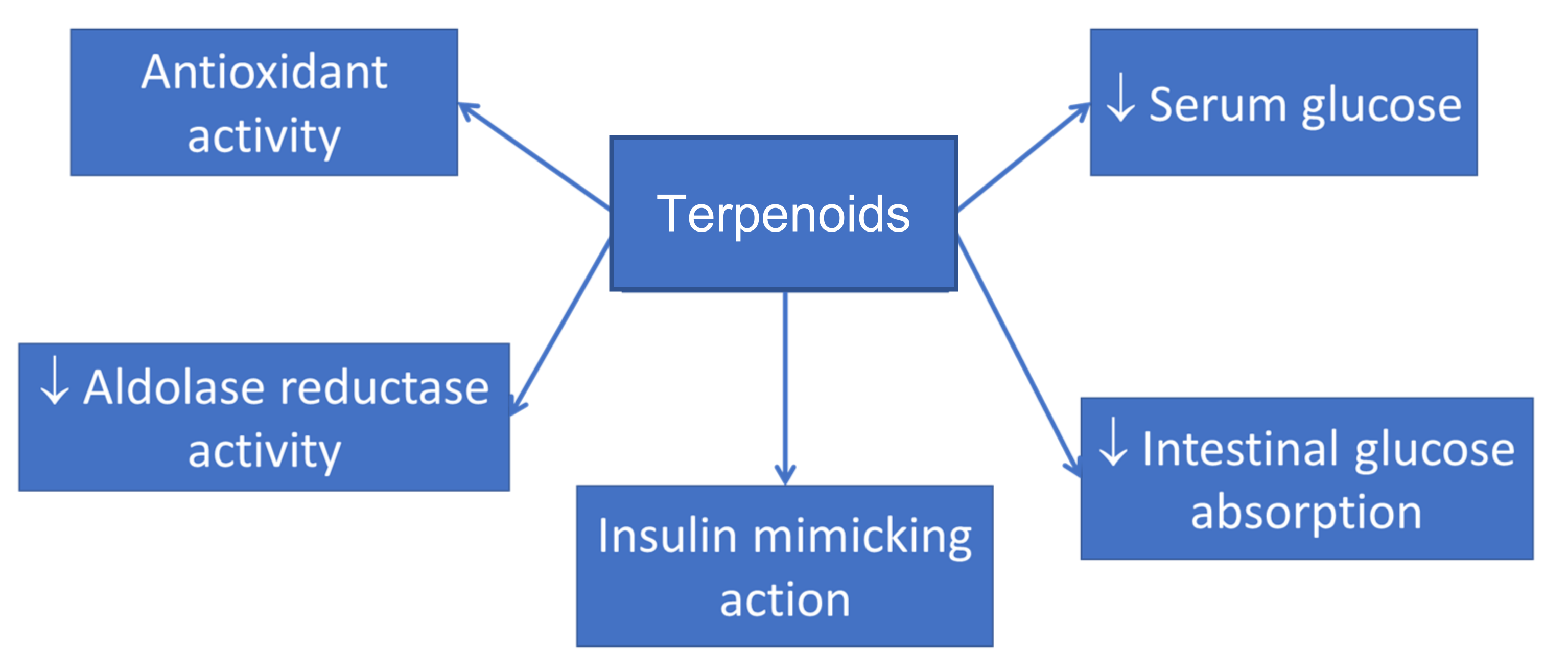
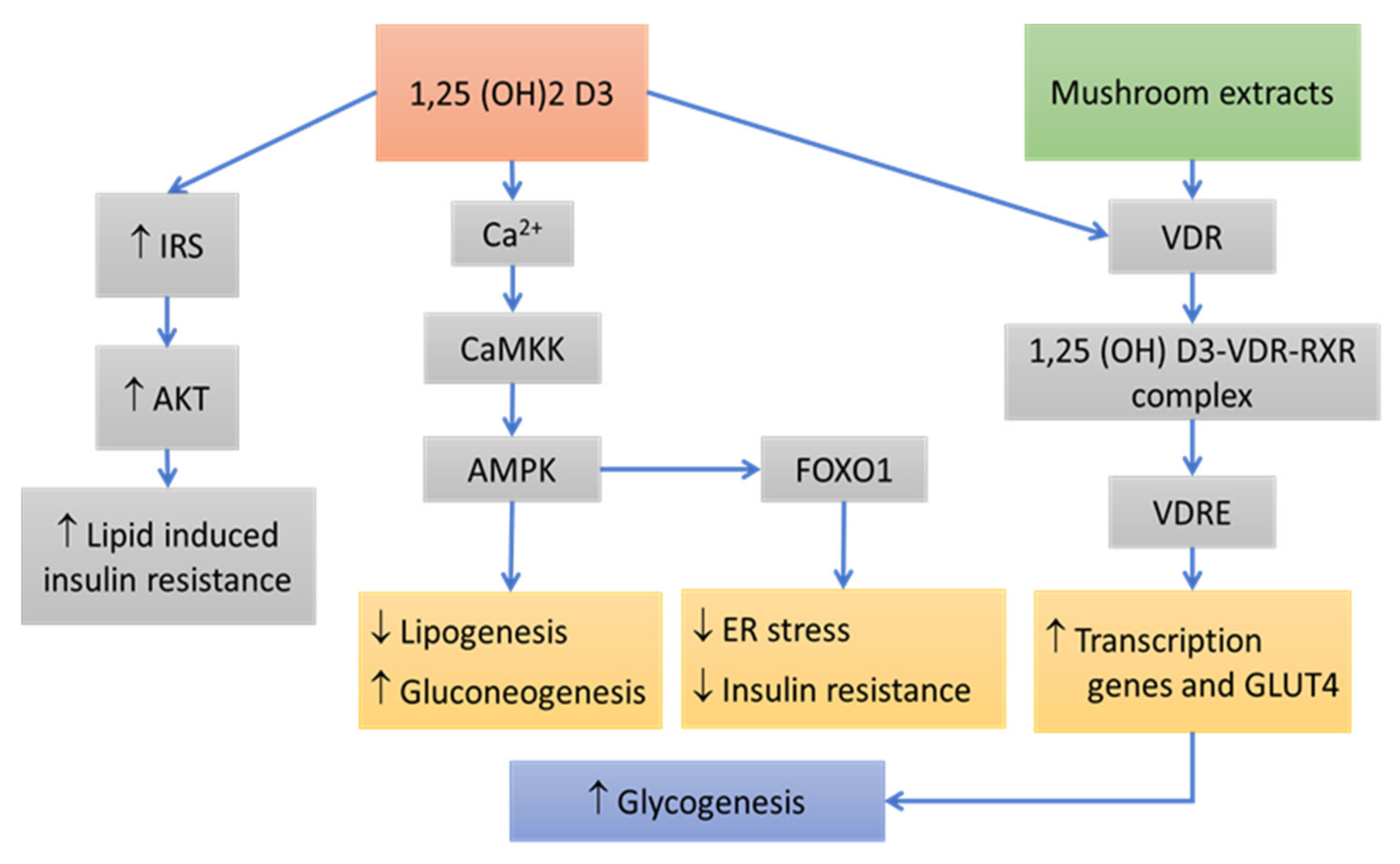
| S. No. | Scientific Name | Vernacular Name | Photos | Reference |
|---|---|---|---|---|
| 1 | Craterellus aureus | Cantharellus, chanterelles |  | [31] |
| 2 | Calvatia rugosa | Puffballs |  | [32] |
| 3 | Coprinus comatus | Shaggy mane | 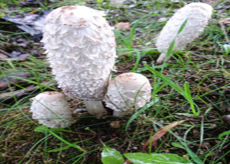 | [33] |
| 4 | Pleurotus ostreatus | Oyster mushroom | 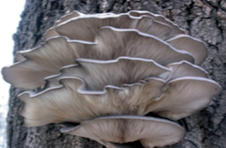 | [34] |
| 5 | Boletaceae Boletales | Boletes | 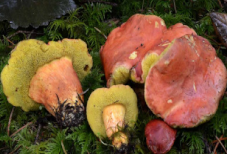 | [35] |
| 6 | Laetiporus sulphurous | Sulfer shelf | 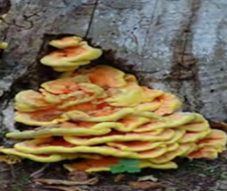 | [36] |
| 7 | Grifora frondosa | Hen of the woods | 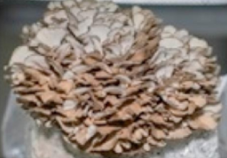 | [37] |
| 8 | Agaricus bisporus | Button mushroom | 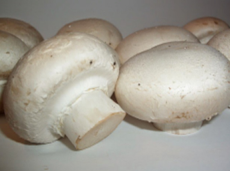 | [38] |
| 9 | Ramariopsis subarctica | Coral fungi | 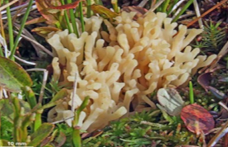 | [39] |
| 10 | Morachella esculenta | Morels | 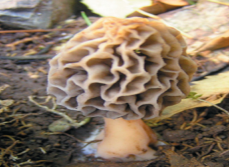 | [40] |
| 11 | Hericium erinaceus | Bearded tooth | 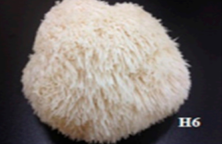 | [41] |
| 12 | Volvariella volvacea | Straw mushroom | 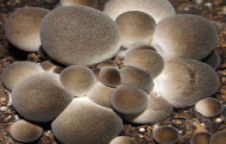 | [42] |
| 13 | Ganoderma lucidium | Lingzhi mushroom | 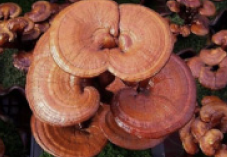 | [43] |
| 14 | Tremella fuciformis | Snow fungus | 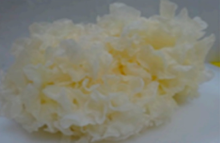 | [44] |
| 15 | Lentinus concentricus | - | 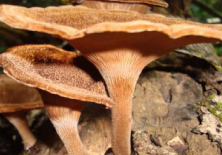 | [45] |
| 16 | Calocybe indica | Milky white mushroom | 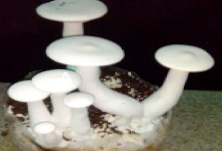 | [46] |
| 17 | Lenzites betulina | Wood-rooting fungi | 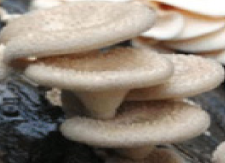 | [47] |
| 18 | Pholiota microspora | Slippery mushroom |  | [48] |
| 19 | Flammulina velutipes | Enoki mushroom | 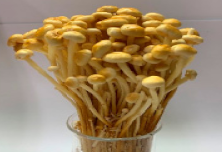 | [49] |
| 20 | Lentinula edodes | Shiitake mushroom |  | [50] |
| 21 | Hypsizygus tessellatus | Buna shimeji | 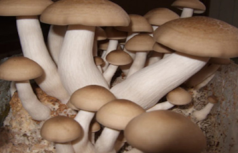 | [51] |
| 22 | Agrocybe aegerita | Poplar mushroom, Chestnut mushroom, Velvet pioppini | 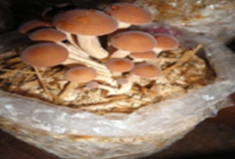 | [52] |
| 23 | Termitomyces robustus | Termitomyces mushrooms | 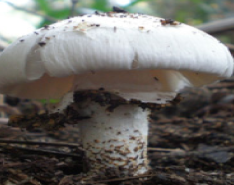 | [53] |
| S. No. | Scientific Name | Compounds | Functions | Models | Mushroom Doses | Mechanism/Action | Reference |
|---|---|---|---|---|---|---|---|
| 1 | Calvatia gigantea | 2-Pyrrolidinone, 1-Dodecene, ergosterol, hexadecane, benzeneacetic acid. | Anti-diabetic, antioxidant, anti-inflammatory. | Alloxan-induced diabetic rat. | 100, 200, and 400 mg/kg BW/day. | -Alpha-amylase inhibitory activity. | [54] |
| 2 | Coprinus comatus | Mycelium, polysaccharides. | Immunomodulatory, anti-diabetic, antioxidant, anti-cancer. | High-fat diet and STZ-induced mice. | 400 mg/kg BW/day. | -Reduce BG level, relieves oxidative stress, ameliorate DN via PI3K/Akt and Wnt-1/β-catenin pathways. | [55] |
| 3 | Pleurotus ostreatus, Pleurotus pulmonarius, and Pleurotus fossulatus | Terpenoids, heterocyclic amines, phenols, glucan, proteoglycan. | Anti-cholesterol, anti-cancer effect, anti-inflammatory, anti-diabetic. | STZ and metformin-induced rat. | 5–10% powder, 50, 80, 200, 250, 400, and 500 mg/kg BW/day extract. | -Decreases serum glucose level, alpha-amylase activity; -Increases P-AMPK and GLUT4 in muscle and adipose tissue; -Improves liver functions and maintains AST, ALT, and ALP levels. | [56,57] |
| 4 | Boletus | Tocopherol, quinic acid, hydroxy benzoic acid. | Antioxidant, anti-inflammatory, hypoglycemic. | STZ-induced rat. | 400 mg extract/kg BW/day. | -Decreases TC, TG, TNF-alpha, and NF-kB level; -Maintains MDA level; -Improves antioxidant (CAT, SOD, and GSH) and CYP7A1 levels. | [58] |
| 5 | Grifora frondosa | Grifolan polysaccharide, D-fraction, MD-fraction, polysaccharide, galactomannan, heteroglycan. | Hypoglycemic, anti-inflammatory, anti-modulatory, anti-tumor. | STZ, alloxan-induced rat and palmitate-induced C2C12 cells. | 0.5–20 µM (introduced to C2C12 cell), 112.5, 200, and 675 mg/kg BW/day extract (introduced to STZ- and alloxan-induced rat). | -Inhibits serum levels of IL-2, IL-6; -Modulates serum level of oxidant factors such as superoxide dismutase, glutathione peroxidase, catalase, malondialdehyde, and reactive oxygen species; -Increases glucose uptake and decreases ROS formation and up-regulates IRS-1, p-IRS-1, PI3K, Akt, pAkt and GLUT4 protein, and down-regulates p-JNK and p-p38 expression; -Improves insulin resistance and gut microflora content. | [59,60] |
| 6 | Agricus bisporus | Pyrogallol, hydroxybenzoic acid derivatives glavonoid. | Anti-inflammatory, anti-diabetic. | Alloxan-induced rat. | 15–30 g/day, 250, 500 and 750 mg/kg BW/day. | -Improves antioxidant (SOD) level; -Improves ALP, AST, ALT level; -Reduces hyperlipidemia. | [38,61] |
| 7 | Morachella esculenta | Polysaccharides (mannose, galactose, and glucose), phenolic compounds. | Antioxidant, anti-inflammation, immunoregulation, hypoglycemic. | - | - | - | [62] |
| 8 | Hericium erinaceus | 4-chloro-3,5-dimethoxybenzoic acid-O-arabitol ester, 2-hydroxymethyl-5-α-hydroxy-ethyl-γ-pyranone, 6-methyl-2,5-dihydroxymethyl-γ-pyranone, 4-chloro-3,5-dihydroxybenzaldehyde, 4-chloro-3,5-dihydroxybenzyl alcohol. | Immunomodulatory, hypoglycemic, antimicrobial. | STZ-treated rat. | 400–600 mg/kg BW/day. | -Reduces blood glucose, BUN, and CRT level; -Maintains ALP, ALT, and AST levels; -Improves antioxidant level (SOD, glutathione). | [63,64] |
| 9 | Ganoderma lucidium | Ganoderic acid, danoderiol, danderenic acid, lucidenic acid, ganoderma leucidum polysaccharide. | Anti-diabetic, anti-inflammatory. | Metformin-, STZ-, and high-fat-treated rat. | 1–3% freeze-dried mushroom, 25, 50, 100, 250, 500 and 1000 mg/kg BW/day extract. | -Decreases HBA1c and improves AST, ALT level. | [60,65] |
| 10 | Lenzites betulina | α-glucan, ß-glucan, ß-glucan protein, galacturonic acid. | Antioxidant, anti-hyperglycaemic, anti-inflammatory, anti-proliferative, antibacterial. | - | - | - | [66] |
| 11 | Flammulina velutipes | Flammulinolide, enokipodin, proflamin, other polysaccharide. | Anti-tumor, anti-hypertension, anti-hypercholesterolemia, hypoglycemic. | STZ-induced mice. | 400 mg/kg, 600 mg/kg, and 800 mg/kg BW/day. | -Improves PI3K/AKT pathway. | [67,68] |
| 12 | Lentinula edodes | Lentinan, eritadenina. | Anti-carcinogenic, antioxidant, hypocholesterolemic action. | STZ-treated rat (gestational diabetes). | 100 mg/kg BW/day. | -Improves maternal insulin level; -Reduces aminotransferase, aspartate aminotransferase, triglyceride, and total cholesterol level. | [69,70] |
| 13 | Termitomyces robustus | γ glutamyl-ß-phenylethylamine, tryptophan 1,4-hydroxyphenylacetic acid, hydroxyphenyl propionic acid and phenyllactic acid. | Hypoglycemic effect. | In vitro assay, Wister rat. | Crude extract 78.05 and 86.10 µg/mL. 500, 1000, and 1500 mg/kg BW/day. In vitro assay, rate acute toxicity test (10 g/kg extract) and subacute toxicity test (500, 1000, and 1500 mg/kg) BW/day. | -α-glucosidase and α-amylase inhibitory activity. | [15,71] |
| Organ Name | Functions |
|---|---|
| Pancreas | Increases insulin secretion and enhances the transformation of pro-insulin to insulin |
| Skeletal muscle | Through VDR expression maintains glucose homeostasis |
| Skin | Improves skin micro-circulations and fasten wound healing |
| Nervous system | Improves nerve conduction and shows the analgesic effect |
| Kidney | Controls urinary albuminuria |
| Retina | Defend against oxidative stress |
Publisher’s Note: MDPI stays neutral with regard to jurisdictional claims in published maps and institutional affiliations. |
© 2022 by the authors. Licensee MDPI, Basel, Switzerland. This article is an open access article distributed under the terms and conditions of the Creative Commons Attribution (CC BY) license (https://creativecommons.org/licenses/by/4.0/).
Share and Cite
Das, A.; Chen, C.-M.; Mu, S.-C.; Yang, S.-H.; Ju, Y.-M.; Li, S.-C. Medicinal Components in Edible Mushrooms on Diabetes Mellitus Treatment. Pharmaceutics 2022, 14, 436. https://doi.org/10.3390/pharmaceutics14020436
Das A, Chen C-M, Mu S-C, Yang S-H, Ju Y-M, Li S-C. Medicinal Components in Edible Mushrooms on Diabetes Mellitus Treatment. Pharmaceutics. 2022; 14(2):436. https://doi.org/10.3390/pharmaceutics14020436
Chicago/Turabian StyleDas, Arpita, Chiao-Ming Chen, Shu-Chi Mu, Shu-Hui Yang, Yu-Ming Ju, and Sing-Chung Li. 2022. "Medicinal Components in Edible Mushrooms on Diabetes Mellitus Treatment" Pharmaceutics 14, no. 2: 436. https://doi.org/10.3390/pharmaceutics14020436







